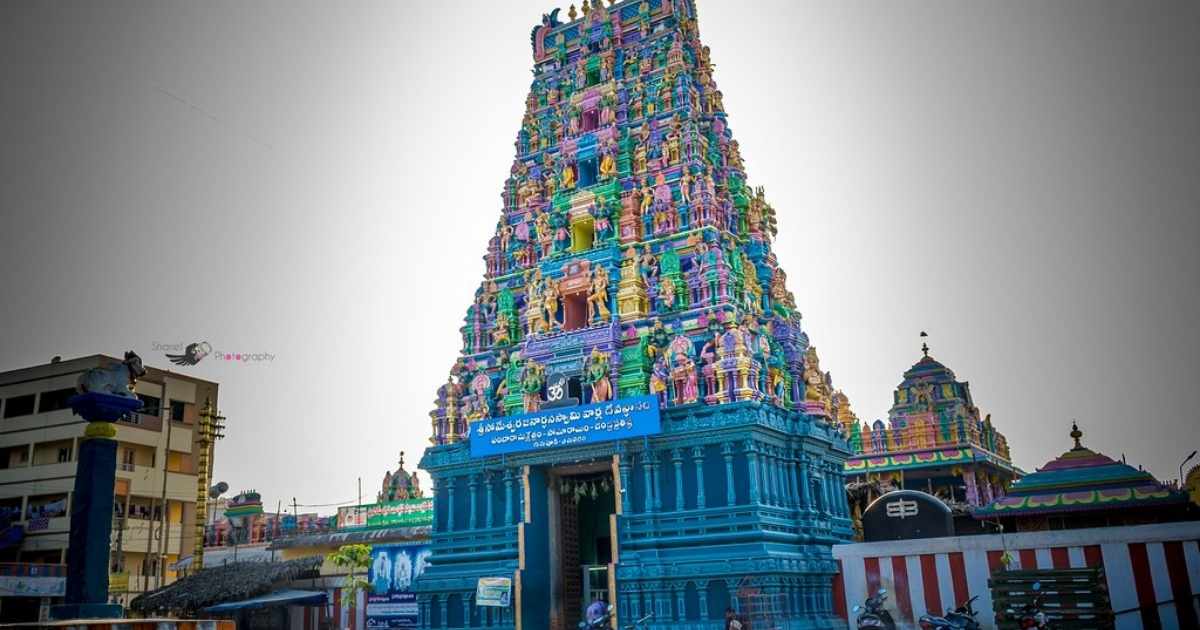Have you ever stumbled across a place that feels like it holds more than just bricks and stories ,something deeper, almost magical? I was planning a trip through Andhra Pradesh and kept hearing whispers about the Bhimavaram Temple. People spoke about it like it wasn’t just another temple, but a living legend with secrets hidden in plain sight. I couldn’t help but wonder ,what makes this temple so special?
In this post, you’ll discover everything you need to know about the Bhimavaram Temple ,its history, unique legends, temple timings, travel tips, and even nearby places worth visiting. Whether you’re planning a spiritual trip or just curious about this hidden gem, you’re in the right place. Let’s dive in and explore what makes this sacred site truly unforgettable.
Bhimavaram Famous Temple
Visiting this place feels like stepping into a story that’s still breathing. Dotting the landscape of West Godavari District, this famous temple draws both local devotees and spiritual tourists from afar. It’s not just another historic site ,it’s alive with rituals, legends, and a sense of calm that sinks into your bones.
You’ll soon learn what sets this shrine apart: from the ancient Atma Linga legend to the sacred pond and the iconic Nandi statues. I’ll walk you through the temple’s unique architecture, festivals, darshan timings, and its role among Andhra Pradesh temples. This is the kind of guide that feels like a friendly local showing you around.
Significance and History
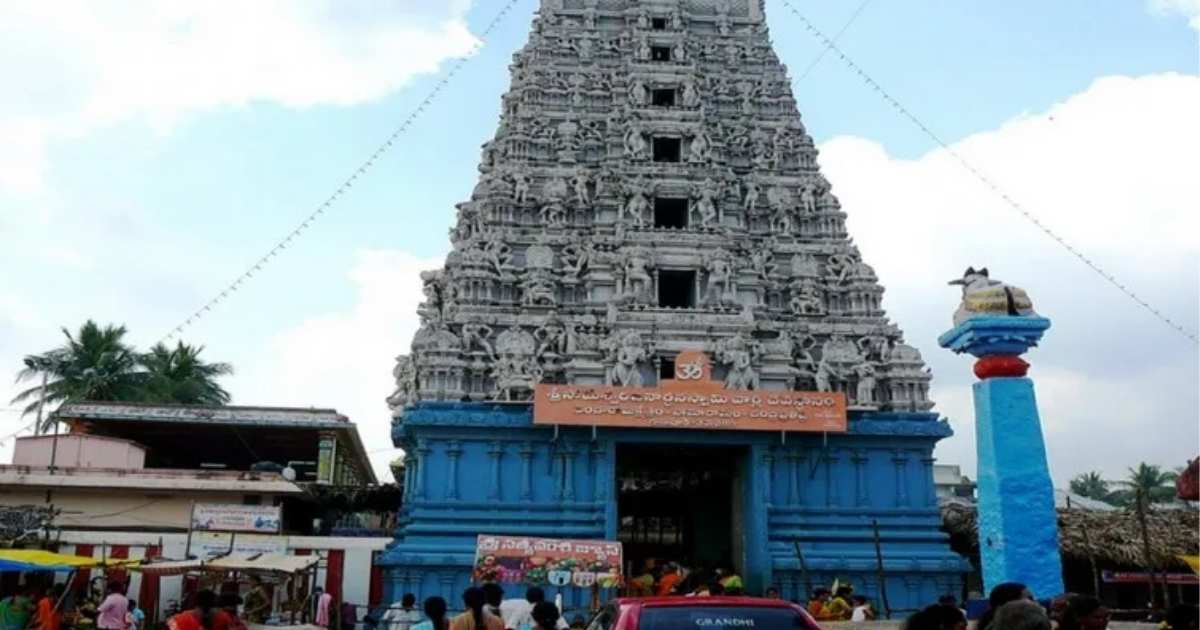
The Bhimavaram Temple, also known as Sri Someswara Janardhana Swamy Temple, is one of the revered Pancharama Kshetras ,five ancient temples dedicated to Lord Shiva across Andhra Pradesh. What makes this temple truly unique is the combination of two deities housed in the same sanctum: Lord Shiva as Someswara and Lord Vishnu as Janardhana, which is rare in Hindu temple tradition. Locals believe that visiting this temple brings spiritual balance and divine blessings, especially during Pournami and Amavasya.
Historically, this temple is believed to date back to the Chalukya dynasty, possibly built by Chalukya Bheema I in the 9th century. Its significance has only grown over time, with Shiva devotees regarding it as a key pilgrimage site in West Godavari. The presence of the color-changing Shiva Lingam, said to appear black in the morning and white in the evening, adds a layer of mystery that continues to attract curious minds and faithful hearts alike.
Must visit: Karimnagar Deer Park: With Ultimate Details and Guide
Legend of Sri Someswara Temple
According to Hindu mythology, the origin of the Bhimavaram Temple is tied to the epic battle between Lord Kumara Swamy (Lord Murugan) and the demon Tharakasura. After the demon’s defeat, the powerful Atma Linga that he possessed shattered into five pieces ,each landing in a different location. One of these pieces is believed to have fallen at Bhimavaram, giving rise to the Sri Someswara Temple. This legend connects the temple to the sacred group of Pancharama Kshetras, making it not just a place of worship but a living piece of mythology.
Another fascinating part of the lore involves Lord Chandra (the Moon God), who is said to have performed penance here to rid himself of a curse. Pleased with his devotion, Lord Shiva is believed to have appeared and granted him relief, which is why the deity here is also referred to as Someswara ,Soma meaning moon. Stories like these aren’t just tales ,they’re part of what makes this temple feel sacred, alive, and full of energy.
Read also :TTD Temple Jubilee Hills Hyderabad: A Spiritual Oasis in the City
Unique Architecture of Sri Someswara Temple
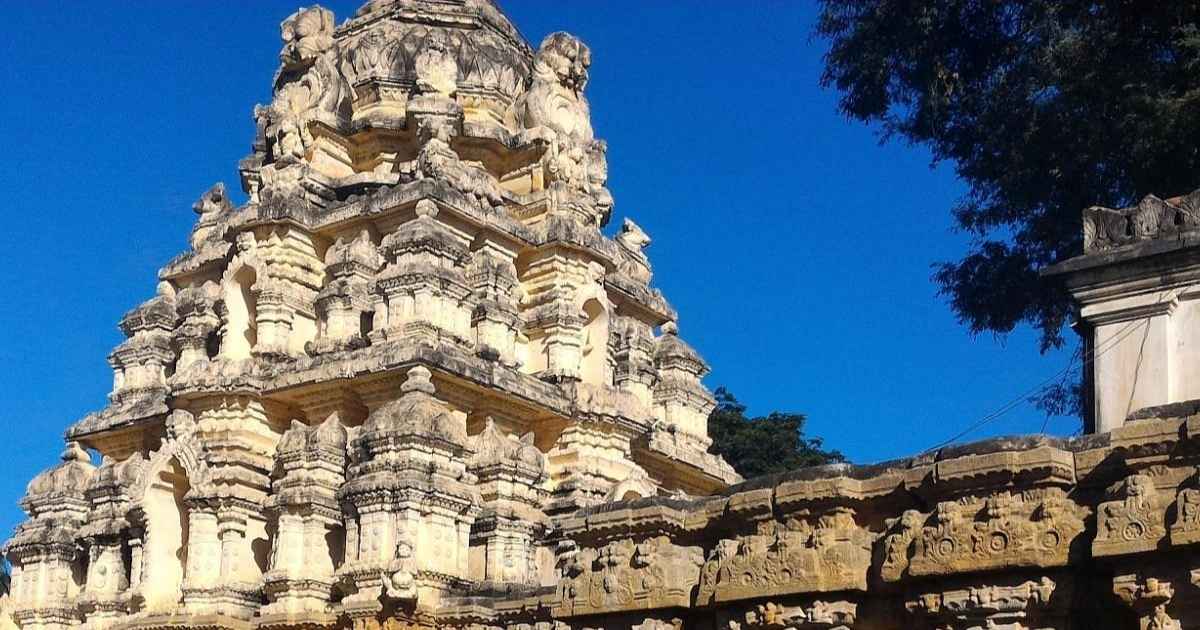
The Bhimavaram Temple isn’t just spiritually significant ,it’s also a stunning example of South Indian temple architecture, with distinct features that reflect its deep-rooted history. Every corner of this temple has a story etched in stone, and its layout is both symbolic and functional. Here’s what makes the temple’s architecture truly one of a kind:
- East-Facing Sanctum (Garbhagriha): Like many ancient Indian temples, the sanctum is built facing east, welcoming the rising sun’s first rays onto the Shiva Lingam.
- Color-Changing Shiva Lingam: A rare and mystical feature ,the Lingam is said to appear black in the morning and gradually turn white by evening, adding an aura of divine wonder.
- Twin Shrines: The temple uniquely houses both Lord Someswara (Shiva) and Lord Janardhana (Vishnu) in adjacent sanctums, symbolizing unity between Shaivism and Vaishnavism.
- Majestic Nandi Statue: A large and beautifully sculpted Nandi faces the sanctum, representing devotion and serving as Shiva’s eternal mount.
- Sacred Pond (Somagundam): Located within the temple premises, this pond is believed to have healing properties and is used in various festival rituals.
- Chalukya Architecture Influence: Intricate carvings, massive pillars, and beautifully crafted stone icons reflect the style and craftsmanship of the Chalukya dynasty.
- Tiered Gopurams (Temple Towers): The temple’s entrance towers are adorned with traditional sculptures depicting scenes from Hindu mythology, adding to the temple’s cultural richness.
Each of these elements adds depth to the visitor’s experience ,whether you’re there for worship, photography, or simply to soak in centuries of heritage.
Also visit: Ross Hill Church A Timeless Symbol of Faith in Visakhapatnam
Festivals and Celebrations
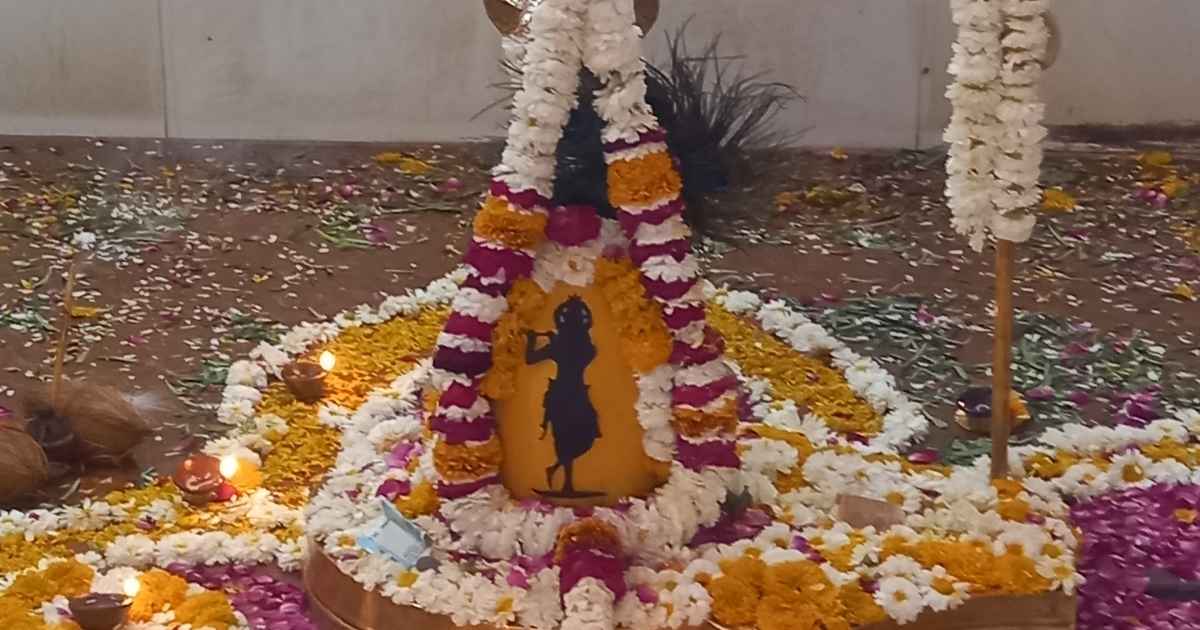
The Bhimavaram Temple comes alive with color, sound, and spiritual fervor during its many festivals. The most celebrated event here is Mahashivaratri, when thousands of devotees gather for all-night vigils, special poojas, and cultural programs. The temple glows with deepam lights, and the atmosphere feels electric with chants of “Om Namah Shivaya” echoing through the air. On this sacred night, the temple’s spiritual energy feels especially powerful.
Other major celebrations include Pournami (full moon) and Amavasya (new moon), both of which hold special significance for Shiva devotees. During these lunar events, rituals like abhishekam (holy bathing of the Lingam), annadanam (free food distribution), and deepa aradhana (lamp worship) are conducted. The temple also participates in the Pancharama Kshetra Utsav, a coordinated festival among the five sacred Shiva temples. These occasions aren’t just religious ,they’re deeply communal, drawing pilgrims, families, and curious travelers together in joyful devotion.
Bhimavaram Temple Timings
Planning your visit is easier when you know the exact opening hours. Here’s the official schedule for Sri Someswara Temple in Bhimavaram:
Regular Darshan Hours
- Morning: 5:00 AM – 11:00 AM
- Evening: 4:00 PM – 8:00 PM (Temples in India Info, Goa Mood)
Notes & Special Considerations
- During festivals like Mahashivaratri, Pournami, Amavasya, and other auspicious occasions, the temple may extend these hours. It’s wise to check locally before your visit (Wikipedia).
- The temple typically closes midday for rituals and upkeep, resuming at 4:00 PM (Gokshetra, HinduPad).
What to Expect During Key Ritual Windows
- Morning rituals begin around 6:00 AM with Suprabhatam, followed by Abhishekam and Archana before the morning darshan ends (Gokshetra).
- Midday rituals often include Madhyahna Aarti around noon, after which the temple closes temporarily until re-opening for the evening slot (Gokshetra).
Quick Overview
| Time of Day | Hours |
| Morning | 5:00 AM – 11:00 AM |
| Midday Break | ~11:00 AM – 4:00 PM |
| Evening | 4:00 PM – 8:00 PM |
Tips for Visitors & Pilgrims
- Aim to arrive before 6:00 AM if you plan to experience full darshan timings and avoid crowd wait times, especially during peak festival periods.
- If you’re visiting on a full moon (Pournami) or new moon (Amavasya), expect larger crowds due to special rituals tied to the color-changing Shiva Lingam phenomenon (reddit.com, Wikipedia).
- Since there’s no official temple website, local guesthouses or temple notice boards are your best source for updated timings during big events (Sakalam – Hindu Blog).
Travel Tips for Bhimavaram Someswara Temple
Planning a visit to the Bhimavaram Temple? A little prep goes a long way in making your trip smooth, spiritual, and stress-free. Whether you’re coming for darshan, festivals, or just to explore the cultural vibe, these tips will help you make the most of your experience.
- Best Time to Visit: Try going between October and March when the weather is cooler. Early mornings and evenings are perfect for darshan and photos, especially when the temple is less crowded.
- Footwear & Dress Code: Like most ancient Indian temples, footwear isn’t allowed past the entrance. Dress modestly ,men should ideally wear a dhoti or pants, and women should opt for sarees or salwar-kameez.
- Getting There: Bhimavaram is well-connected by train and road, with the nearest railway station just 2–3 km from the temple. If you’re coming from Vijayawada or Rajahmundry, it’s about a 2 to 3-hour drive.
- Accommodation: You’ll find budget lodges and a few mid-range hotels in Bhimavaram town. If you’re visiting during Mahashivaratri or other major festivals, book your stay in advance.
- Carry Essentials: Bring water bottles, hand sanitizer, and maybe a small mat if you plan to sit for a while. Mobile signals can vary, so offline maps may help.
- Local Eats: Don’t miss the local Andhra meals and tiffins in nearby eateries. Many offer simple, delicious vegetarian food that’s easy on the stomach before or after darshan.
- Respect Rituals: Avoid flash photography inside the sanctum. If a pooja is in progress, stand quietly and follow the lead of other devotees.
A visit to this temple isn’t just sightseeing ,it’s a cultural and spiritual journey. Be open, respectful, and you might leave feeling more connected than you expected.
Bhimavaram Someswara Temple Location
The sacred Bhimavaram Temple, also known as Sri Someswara Janardhana Swamy Temple in Somarama:
Located on Matsyapuri Road in Gandhinagar, Gunupudi, Bhimavaram (West Godavari district, Andhra Pradesh), the temple sits just about 1–2 km from Bhimavaram Junction railway station (Hindu Blog, Mapcarta).
Key Location Details & Travel Connections
| Mode | Details |
| Railway | Bhimavaram Junction (BVRM) or Town (BVRT) stations are within walking distance (~1–2 km) of the temple (hindutourism.com). |
| Road | Located ~1.2 km from Bhimavaram New Bus Station. Frequent bus connectivity is available from cities like Rajahmundry (~76 km), Eluru (~65 km), Vijayawada (~117 km), Kakinada (~116 km), Palakollu (~22 km), and Visakhapatnam (~277 km) (Trawell.in, pravase.co.in, Trawell.in). |
| Air Travel | Nearest domestic airport: Rajahmundry (~90–91 km). Also accessible via Vijayawada (~140 km), and Hyderabad/Chennai for international flights (hindutourism.com, templeconnect.com, Go2India). |
Why the Location Matters
- Situated in the heart of Bhimavaram city, the temple is easily reachable from local transport hubs, making it visitor-friendly (Mapcarta).
- Its position in Gunupudi connects you directly to several nearby Pancharama Kshetras like Palakollu, Draksharamam, and Amaravathi if you’re planning a spiritual circuit (Trawell.in).
- The neighbourhood includes a sacred lotus pond (Somagundam), local shrines, and bustling streets filled with devotional energy and cultural vibrance (Trawell.in).
You can walk from the railway station or take an autorickshaw from the bus stand. The serene Somagundam tank nearby is a must-see once you arrive.
Famous Temples Near Bhimavaram
If you’re visiting the Bhimavaram Temple, you’re in luck.West Godavari and nearby districts are dotted with incredible temples steeped in mythology and ancient architecture. Many of them are part of the Pancharama Kshetras, making it easy to create a meaningful spiritual circuit during your trip.
Here are some must-visit temples near Bhimavaram:
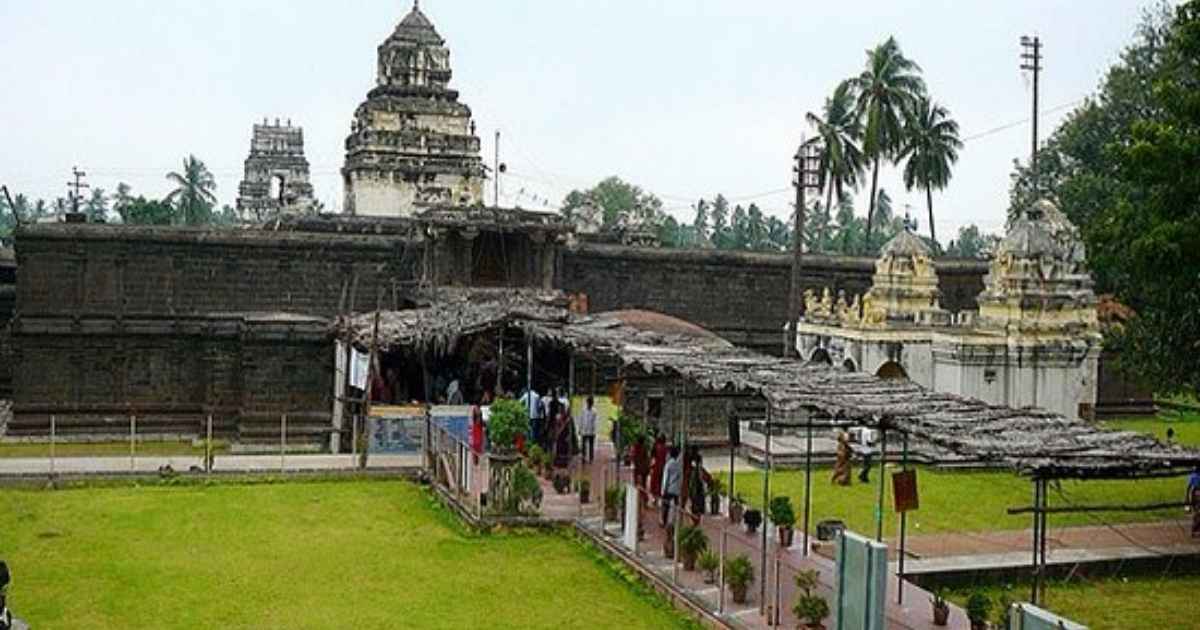
- Ksheera Rama Temple, Palakollu (22 km): Another of the Pancharama Kshetras, this temple is dedicated to Lord Shiva and known for its towering gopuram and white Shiva Lingam.
- Draksharama Temple, East Godavari (60 km): One of the oldest Shiva temples in Andhra Pradesh, it showcases classic Chalukya architecture and a massive Shiva Lingam said to have emerged on its own.
- Amararama Temple, Amaravathi (117 km): Located near Guntur, this temple is situated on the banks of the Krishna River and is part of the Pancharama circuit.
- Kumararama Temple, Samalkota (110 km): Famous for its two-storied sanctum and exquisite carvings, this temple is a must-see for lovers of art and mythology alike.
- Sri Bhavanarayana Swamy Temple, Sarpavaram (110 km): A beautiful shrine dedicated to Lord Vishnu in his Narayana form, known for its serene atmosphere.
- Pattiseema Veerabhadra Swamy Temple (40 km): Located on an island in the Godavari River, this temple is accessible by boat and offers a truly unique experience.
Each of these temples is unique in legend, architecture, and spiritual atmosphere. If you’re planning a full-day or weekend pilgrimage, combining these sites with the Bhimavaram Temple visit can turn your trip into a soulful journey through Andhra’s sacred heritage.
Frequently Asked Questions (FAQs)
What is special about the Bhimavaram Temple?
It houses both Lord Shiva and Lord Vishnu, and features a mystical color-changing Shiva Lingam.
What are the temple timings?
The temple opens from 5:00 AM–11:00 AM and 4:00 PM–8:00 PM daily, with extended hours on festivals.
Is there any entry fee?
No, entry is free. Small charges may apply for special darshan, abhishekam, or other temple services.
How do I reach the temple?
Located in Gunupudi, Bhimavaram, it’s easily accessible by train, bus, or taxi from nearby Andhra cities.
Are there facilities for food and lodging nearby?
Yes, Bhimavaram offers budget hotels and vegetarian restaurants near the temple. Book early during festivals.
Is the temple wheelchair accessible?
Access is limited due to steps; elderly or disabled visitors may need help entering temple premises.
Conclusion
The Bhimavaram Temple isn’t just a stop on a pilgrimage map ,it’s a place where history, devotion, and legend come alive. Whether you’re drawn by its mystical Shiva Lingam, its place among the Pancharama Kshetras, or the quiet power of its sacred pond, the experience stays with you long after you leave.
From its Chalukya-era roots to vibrant festivals like Mahashivaratri, this temple offers more than rituals ,it offers connection. If you’re searching for a spiritual destination that blends divine energy with deep cultural heritage, this temple in West Godavari is one you won’t want to miss.

With over five years of experience in crafting engaging and insightful content, I’m the creator of TravelLeeps.com; a travel blog dedicated to inspiring journeys, practical tips, and unforgettable destinations around the globe.


